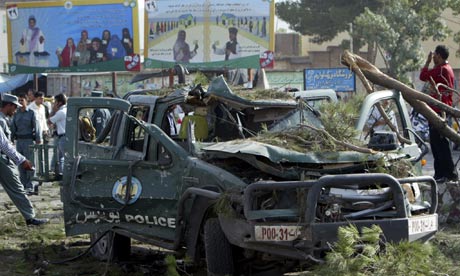The situation in Jammu & Kashmir (J&K) continues to remain a cause for concern to the government of India. Since end-1989, Pakistan has been waging a ‘proxy war’ against India in J&K. It has done this by aiding and abetting disaffected and misguided Kashmiri youth to rise against the Indian state. Despite the cease-fire on the Line of Control (LoC) since November 2003 and the tenuous rapprochement process, Pakistan continues to surreptitiously practice its peculiar brand of state-sponsored terrorism. This is borne out by the continuing attempts at infiltration in Kashmir during the summer of 2011.
Till some years ago, Pakistan’s official position was that it provides only ‘diplomatic, political and moral’ support to ‘freedom fighters’. However, it is now internationally accepted that the Pakistan army and the Inter-Services Intelligence (ISI) Directorate have been providing military training, weapons, military equipment, ammunition and explosives to the terrorists, besides financial support. The ISI spends approximately Rs 5 to 10 crore (USD 1 to 2 million) per month on its proxy war campaign. Till the present cease-fire came into effect, the Pakistan army actively supported terrorist bids to infiltrate into J&K by engaging Indian posts along the routes of infiltration with artillery and small arms fire. Though infiltration has now been reduced due to effective counter-infiltration measures by the Indian army, even the present low levels would not be possible but for the encouragement and steady support being given to the Jihadi extremists by the Pakistan army.
Throughout the prolonged period of Pakistan’s proxy war, India has shown tremendous restraint and immense tolerance in the face of grave provocation to its security. It is inconceivable that any other nation would have acted with the sense of responsibility that India has in not launching trans-LoC operations to eliminate militant training camps and interdict known routes of infiltration. Many Indian analysts have been advocating a pro-active trans-LoC and trans-border counter-proxy war policy.
Former RAW analyst B. Raman has written: “The main reason why India has not yet been able to effectively put an end to Jihadi terrorism against it and its civilian population sponsored by the Pakistani Inter-Services Intelligence (ISI) is because India’s counter-terrorism operations are directed only against the terrorists operating in its territory. They are not yet directed against the State sponsoring them despite a persistent demand from growing sections of the Indian population for targeting the State of Pakistan too.”
While Pakistan had reduced the overt infiltration of so-called Kashmiri ‘freedom fighters’ across the LoC during Musharraf’s rule, it continued to do so covertly by looking for smarter methods of inducting more Jihadis; for example, through neighbouring countries like Nepal and Bangladesh. The remaining roots of terrorism in Kashmir now lie in Pakistan Occupied Kashmir (POK) and in Pakistan itself and, unless India shows the political will necessary to eliminate these roots, Pakistan’s proxy war is likely to continue unabated even though it may become more sophisticated and covert in its approach.
The Pakistan army is under tremendous pressure from Jihadi elements responsible for internal instability and from the Americans to deliver more in the so-called War on Terror. Despite these pressures, there is unlikely to be any change in the Pakistan army’s hostility towards India and its covert support, even sponsorship, of Islamist fundamentalist terrorism across the LoC and the international boundary (IB) from Pakistan soil. Prime Minister Gilani said recently that Pakistan will continue to provide diplomatic, moral and political support for what he says is a ‘freedom struggle’ in Kashmir.
Clearly, the rapprochement process is a tactical ploy to tide over current domestic difficulties and there has not been a strategic change of heart. Pakistan’s proxy war with India will go on because the Pakistan army will not allow the civilian leadership to change its fundamental policy towards India. Hence, lasting peace in Kashmir and between India and Pakistan will remain a distant dream.

 This week, the Taleban launched attacks in the northern cities of Herat and Taloqan. Also this week, about 200 Afghan militants crossed into northwestern Pakistan and engaged in a gun battle with Pakistani security forces. Rather than work even more closely with American forces, President Hamid Karzai of Afghanistan issued an ultimatum this week to American Forces and NATO to cease all strikes against Afghan homes. Why?
This week, the Taleban launched attacks in the northern cities of Herat and Taloqan. Also this week, about 200 Afghan militants crossed into northwestern Pakistan and engaged in a gun battle with Pakistani security forces. Rather than work even more closely with American forces, President Hamid Karzai of Afghanistan issued an ultimatum this week to American Forces and NATO to cease all strikes against Afghan homes. Why?